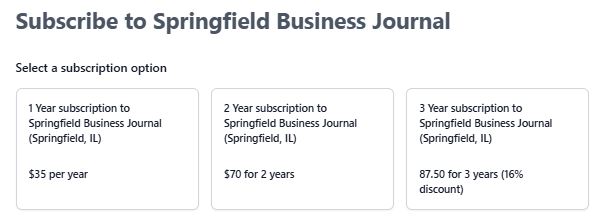Where were you born and raised, and what was your first job?
I was born and raised in Greenfield, which is south of Jacksonville. I grew up on a farm and did a certain amount of work there. My first actual non-farm, paying job was at a filling station in Greenfield.
When did you decide to enter the architectural field?
I went to college at the University of Missouri-Rolla (now Missouri University of Science and Technology) for one year in engineering. It wasn’t a good fit, but it was close. At that point I decided a good fit would be to study architecture at the University of Arkansas.
Basically, I have had one job for almost 50 years. In the summer of 1974, I worked as an intern and at that time the company was named Golabowsky-Spinney-Coady. When I finished college in 1975, I started working here full time, and the company name had changed to Spinney-Coady-Parker. It’s now Steckel-Parker Architects.
How has the architectural field changed in your 50 years in the business?
The advent of computers and CADD (computer-aided drafting and design) has been a real significant change. When I started everything was manually drawn, and when you were manually drawing it took a whole lot more people to do the same thing that quite a few less people can do now.
Which projects that you’ve worked on are your personal favorites?
The LRS complex, the Gables, the BRANDT corporate office building – those are some of my favorite larger projects. There has just been a phenomenal number through the years that I have enjoyed tremendously – some of the smaller ones as well. I still enjoy doing projects.
What is the greatest satisfaction that you get from your career?
It’s working on the projects and seeing them through. Also, having clients that sometimes don’t totally have the vision to see exactly what the final product is going to be, and then are quite satisfied.
What are the biggest challenges that architects face today?
Coming out of COVID-19, things have changed a lot. Scheduling projects, the supply chain and manpower – both in architects’ offices and on job sites – have become really significant challenges in the last few years.
What will the local designed environment look like in the not-too-distant future?
There will be continued refinement in the efficiency of buildings, the reduction of energy usage and that sort of thing. The look of some things is not necessarily going to change a lot, particularly when you’ve got a city like Springfield that has a lot of historic buildings. There is always hopefully going to be that historic fabric within the built environment.
We are a pretty traditionally-styled area here. Traditional forms of architecture are what people seem to gravitate toward. I don’t think visually you’re going to see that much of a change, it’s going to be more in the efficiency of buildings.
How do you give back to the Springfield community?
There are times that we have donated services to certain worthwhile groups. We donated services on the original Ronald McDonald House and the Habitat for Humanity office building on South Sixth Street. It’s an effort to utilize what we do for the good of the community.
I have been on Springfield’s Historic Sites Commission for a lot of years. That’s all volunteer, and it’s to try to keep the inventory of historic buildings in place. If somebody wants to put an addition on a historic building it goes through an approval process with the commission.
To what do you attribute your 50-year longevity in the same career?
It has been a tremendous pleasure working in the Springfield environment. That’s the reason I have been at it as long as I have and plan to continue to do so. There have been a lot of wonderful clients that I’ve worked with and a lot of great contractors. It’s been a great fit for me, and there’s no place else I’d rather be.
What advice can you give to young people entering the career field today?
Try to learn as much from every project as you can. It’s a field where you continue to learn forever. Take advantage of the nature of that project to learn things you didn’t know before. The process is to keep learning and grow as a result.
This article appears in February SBJ 2024.


